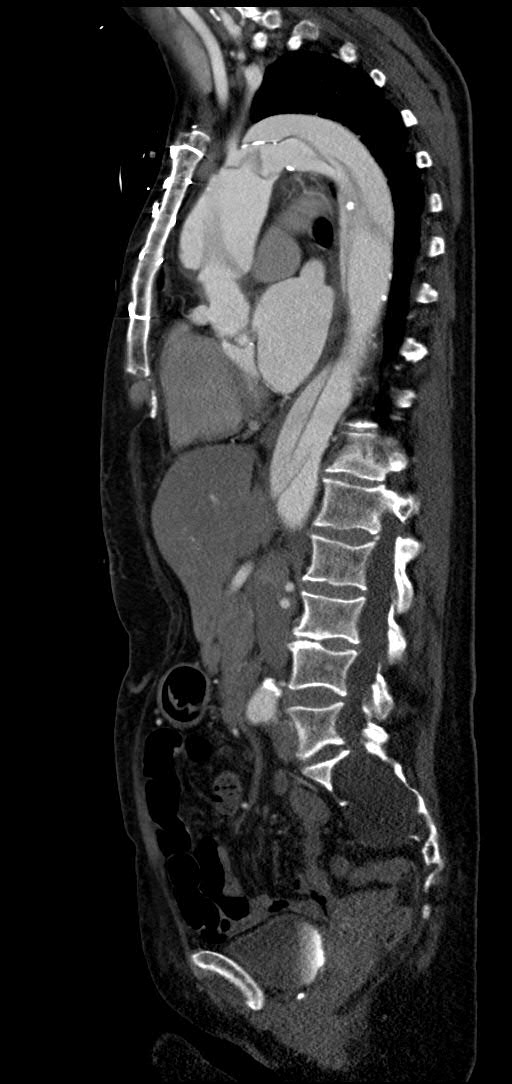Endovascular Rescue for Acute Aortic Dissection in Elderly Female with Marfan
Yang M Jiang, Sila Solak, Albert Hakaim, Houssam Farres
Mayo Clinic FL, Jacksonville, FL
Background
Aortic dissection and rupture is the main cause of death in patients with Marfan syndrome. Most commonly, Stanford type A dissection occurs in approximately 20-30% of patients (1). We present a case of a 72-year-old female, diagnosed with Marfan syndrome by positive genetic testing for heterozygous fibrillin gene mutation who underwent valve sparing aortic root replacement in 2003. She presented to the emergency department with four-day history of shortness of breath with exertion and pleuritic chest pain that radiates to the throat and back. CT angiography of the chest showed interval development of complex circumferential dissection beginning from the site of aortic valve repair to the level of the renal arteries.
Methods
She underwent emergent aortic arch debranching with elephant trunk technique. However, during the procedure, the anastomosis of the graft to the proximal descending aorta was complicated by significant bleeding due to the fragility of the adventitia and high flow within the false lumen. At that point, the vascular surgery team were consulted for a possible endovascular intervention as a rescue procedure in hopes of controlling the anastomotic bleeding and obliterating the proximal portion of the false lumen. Under C arm and TEE guidance, a 35 mm Gore Tag stent graft was placed crossing the aortic distal anastomosis. A second 37 mm Gore Tag stent graft was placed distally to end up at T8 level.
Results
Bleeding along anastomotic site was significantly improved after stent placement. She was transferred to the ICU intubated and on Venous-Arterial ECMO. Her post-operative course was complicated by left frontal infarct, respiratory failure, and renal failure. Repeat CT scan on post-operative day 19, showed complete resolution of the proximal portion of the false lumen. She was discharged to rehab with recovery of renal, respiratory, and neurologic function and moderate independent mobility.
Conclusions
Mortality following surgical repair of type A aortic dissection is approximately 26% (2). Our patient was uniquely high risk because of her age and fibrillin gene mutation. Endovascular stenting vs coil embolization of the false lumen were both considered for this case. However, in our patient, high flow within the false lumen caused severe compression of the true aortic lumen. Therefore, endovascular stenting was elected to effectively cover the anastomotic site to minimize anastomotic bleeding, cover sites of intimal fenestration to prevent continued influx of blood flow, and depressurize the false lumen to promote thrombosis. Our case shows that endovascular stenting can be a good rescue option for complicated open repair of acute type A aortic dissection in setting of poor hemostatic control. 
Back to 2020 Abstracts
